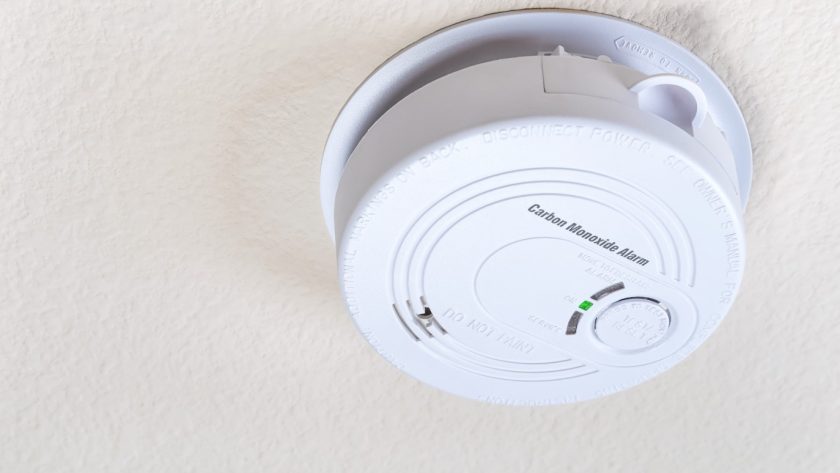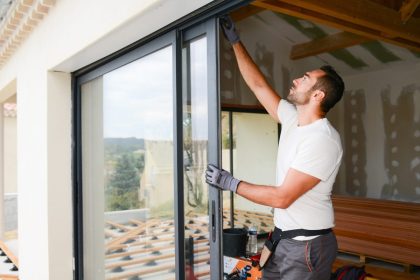Carbon monoxide is a colorless, odorless gas that significantly threatens human health. Often called the “silent killer,” carbon monoxide can leak from your household appliances or heating systems and contaminate the air.
According to the CDC, carbon monoxide poisoning causes about 420 fatalities and over 10,000 hospitalizations each year. But this danger is preventable, thanks to carbon monoxide detectors. So, here’s all you need to know about these critical devices—including how they function and how to ensure they’re in optimal working condition.
The Importance of Carbon Monoxide Detectors
Installing a carbon monoxide detector in your home could potentially be life-saving—it’s that simple. Carbon monoxide detectors are essential for every household, but these devices are especially crucial for homes that run on gas utilities.
Carbon monoxide forms as a result of incomplete fuel combustion. This means that furnaces, space heaters, stoves, and gas fireplaces (often lacking adequate ventilation) can create and release carbon monoxide into the atmosphere.
Since humans cannot see or smell this toxic chemical, you might not even know it’s there until symptoms occur, like headaches, nausea, chest pain, dizziness, confusion, shortness of breath, seizures, and unconsciousness. A carbon monoxide detector is the safest way to prevent these harmful outcomes so you can evacuate immediately.
How Carbon Monoxide Detectors Operate
A carbon monoxide detector’s job is to monitor the air for any trace of carbon monoxide gas. If it senses the chemical, this device will issue an alarm warning you to leave the premises. Most carbon monoxide detectors use one of three sensor methods—biomimetic, electrochemical, or metal oxide semiconductor. Let’s unpack each of them below:
Biomimetic Sensor
Biomimetic sensors mimic how the human body reacts to carbon monoxide absorption. A gel-filled chamber within the sensor changes color when it encounters carbon monoxide gas, and this chemical reaction sets off an alarm.
Electrochemical Sensor
Electrochemical sensors operate on electrodes, which have been submerged in a chemical solution. When carbon monoxide interacts with this solution, it produces an electrical current, causing the alarm system to activate.
Metal Oxide Semiconductor
Metal oxide semiconductors contain a silica chip that is highly sensitive to toxic chemicals. This chip reacts to carbon monoxide by decreasing its electrical resistance and then sounding the alarm when it reaches a specific threshold.
How to Test and Maintain Carbon Monoxide Detectors
To ensure optimal functioning, test your carbon monoxide detector at least once a month and perform routine maintenance as necessary. The Environmental Protection Agency also advises having a professional technician inspect all fuel-burning appliances to search for any potential leaks. Here’s how to test and maintain a carbon monoxide detector:
Follow the Manufacturer’s Instructions
Always refer to the manufacturer guidelines in your owner’s manual before you test the device. Certain models might have different testing protocols, so familiarize yourself with the instructions specific to your carbon monoxide detector.
Check the Detector’s Power Source
Carbon monoxide detectors are either battery-powered, circuit-wired or a combination of both. Check this power source and replace the batteries at least once a year. Don’t forget to inspect circuit-wired devices for electrical issues as well.
Ensure the Test Button Is Working
Your carbon monoxide detector will usually come with a test button. Press that button, then hold it to initiate a self-test. The alarm should activate at this point—but if it doesn’t, replace the batteries or the entire unit if necessary.
Inspect for Signs of Wear and Tear
Look for any visible signs of wear on the device, such as fading display features, broken casing, or wire damage. If the problems are electrical (not just cosmetic), replace your carbon monoxide detector to ensure safe, optimal functioning.
Clean the Device Regularly
Debris can accumulate on the sensors over time, reducing their accuracy. Vacuum or dust the carbon monoxide detector’s surface to clean off these particles—consult the owner’s manual for precise cleaning methods.
Stay Safe with Carbon Monoxide Detectors
Carbon monoxide detectors are essential devices that offer a critical layer of protection against the silent threat of carbon monoxide poisoning. When you understand how they operate and know the importance of routine testing, your home will be safer. So, take the right precautions and invest in your household’s well-being.





